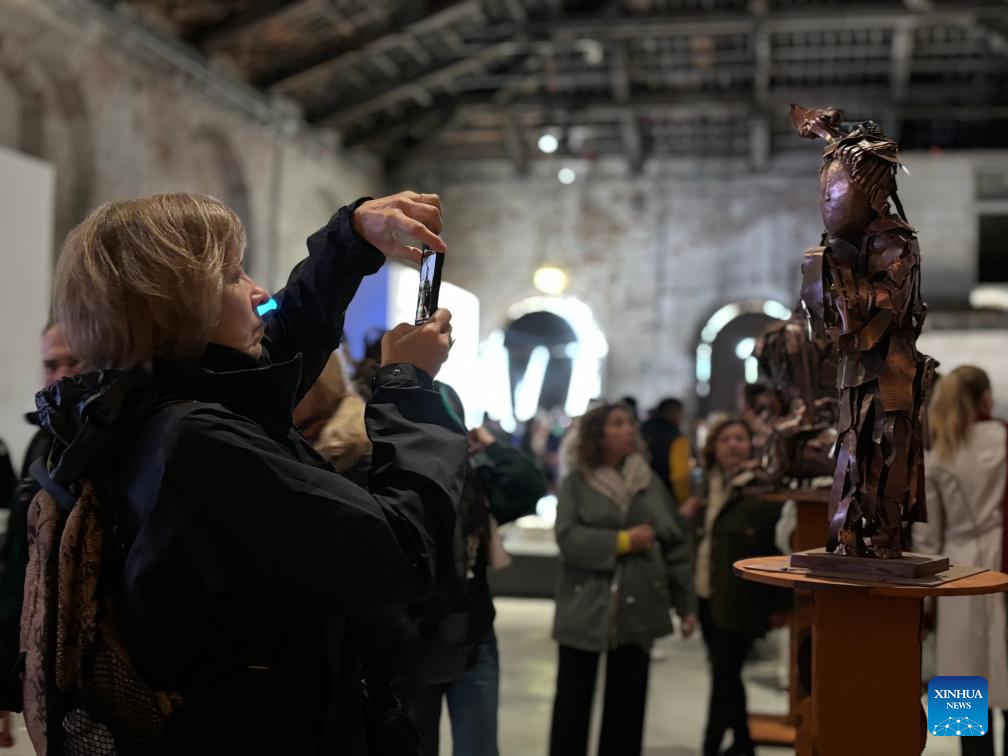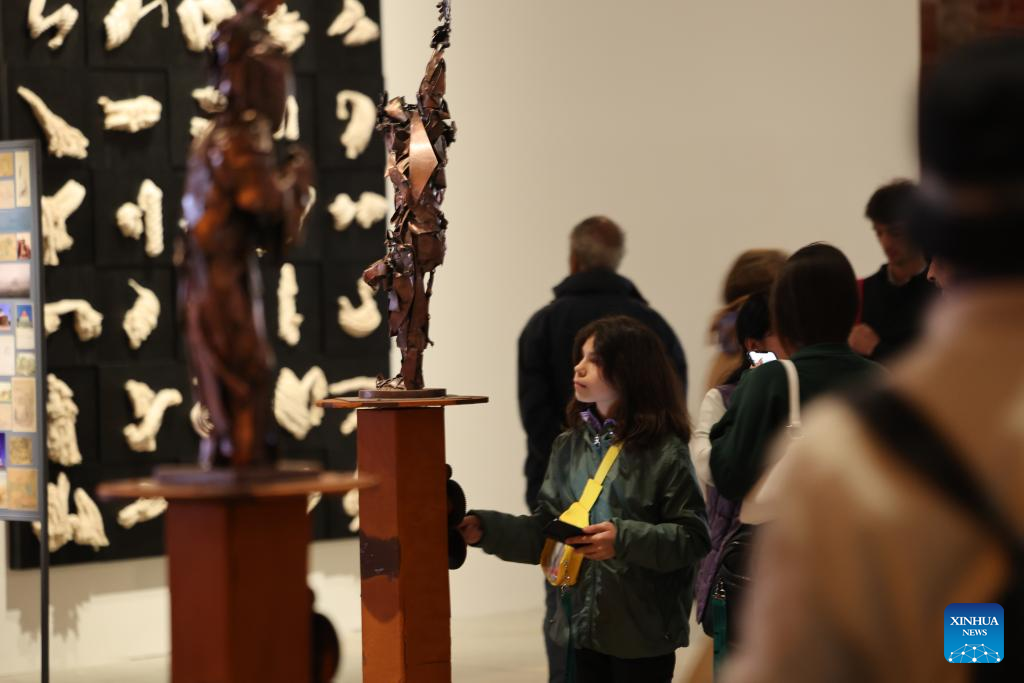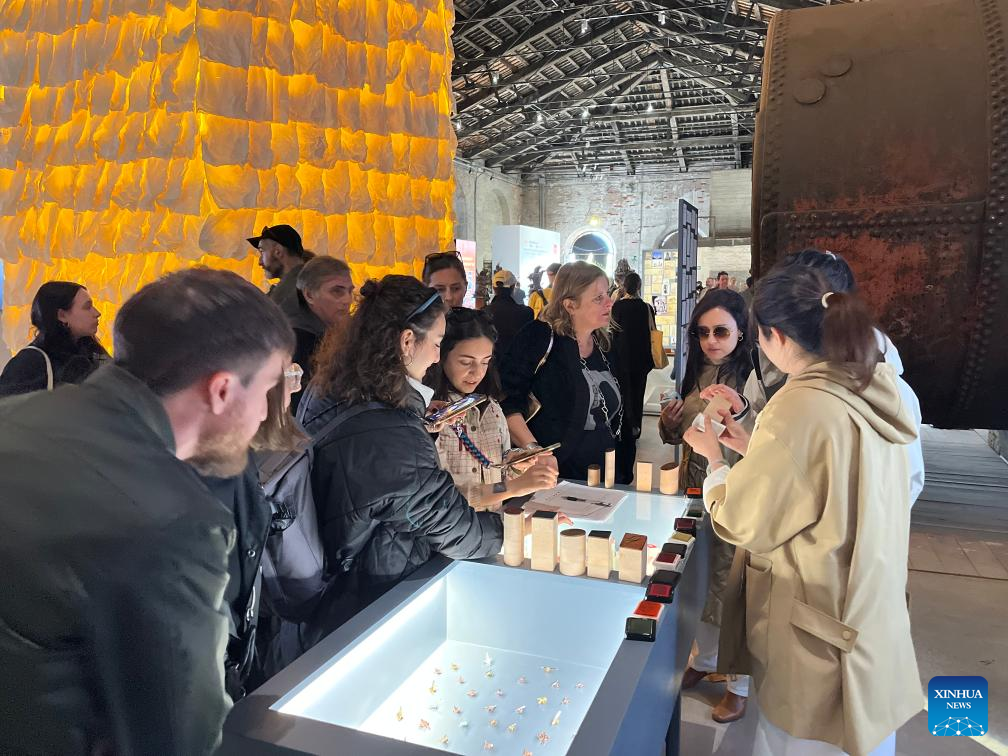
People visit China's national pavilion in the 60th Venice Biennale in Venice, Italy, April 18, 2024. (Xinhua/Han Xiao)
VENICE, Italy, April 18 (Xinhua) -- China's national pavilion at the 60th International Art Exhibition opened on Thursday in the northern Italian city of Venice.
Themed "Altas: Harmony in Diversity," the pavilion highlights the concepts of "to gather, converge, collect, or assemble," aiming to convey the values of harmony and beauty rooted in Chinese culture.
"China's national pavilion in the 60th Venice Biennale adds importance to the joint commemoration between China and Italy of the 700th anniversary of Marco Polo's death ... and will further promote mutual understanding and friendly exchanges between the two countries in all aspects," said Zhang Lingxiao, cultural counselor of the Chinese Embassy in Italy, in the opening speech.
In her speech, Laura Fincato, Italy's former deputy foreign minister, said that China's national pavilion addresses the significance of cultural communication as a bridge between different countries.
"The theme of this year's China's national pavilion shows that both Chinese and Italian cultures have thousands of years of history and that both sides can respect their different origins and build ever closer relationships in harmony," Fincato told Xinhua at the ceremony.
"It is full of imagination," Vittorio Sgarbi, one of the country's best-known political and social commentators, told Xinhua. "From the exhibition, we can see how Chinese artists are connected with the world and enjoy the freedom of imagination in their art research."
The exhibition at the Chinese pavilion is divided into two parts. The first part consists of images and documents from a comprehensive collection of ancient Chinese paintings, while the second part features works by seven contemporary Chinese artists.
Professor Wang Xiaosong from Zhejiang University, one of the curators, told Xinhua that in a major national cultural project launched in 2005, a total of 12,405 masterpieces have been collected from more than 260 cultural institutions worldwide. In the pavilion this time, 100 selected pieces from the collection are showcased in a data visualization format.
In addition to the ancient paintings, new works of traditional Chinese architecture, calligraphy and flora by contemporary Chinese artists are displayed, integrating the traditional with the contemporary.
"I am deeply impressed by the ancient Chinese paintings, which allow me to appreciate the love and care for nature in traditional Chinese culture," said Daniel Grun, an art teacher from Slovakia.
Sarita Matjievic Zilnik, a Serbian producer, admired the contemporary Chinese art pieces. She told Xinhua that the exhibition is "the best cultural exchange experience" she has had so far at this year's Biennale.
"China's national pavilion is the highlight of this year's Biennale," Sebastian, an Australian art worker, told Xinhua. "I have traveled to China, and I genuinely understand that the exhibition uses Chinese elements very well."
The exhibition, also known as the 60th Venice Biennale, will be held from April 20 to Nov. 24 at the Arsenale and the Giardini venues here under the theme "Foreigners Everywhere." ■

People visit China's national pavilion in the 60th Venice Biennale in Venice, Italy, April 18, 2024. (Photo by Xu Dayou/Xinhua)

People visit China's national pavilion in the 60th Venice Biennale in Venice, Italy, April 18, 2024. (Xinhua/Zhang Xinwen)



